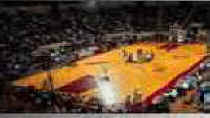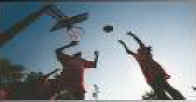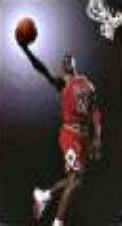Stages of Learning
The process
of learning has been broken into three stages: (1) the verbal-cognitive
stage, (2) the motor stage and (3) the autonomous stage.
Verbal-Cognitive
Stage
In the first
stage, the learner is confronted with an entirely new task. According to Gentile (1972), they are faced with the challenge of getting
the general idea of the movement. Learners in this stage spend most of
the time verbalizing what it is they want to do, and deciding on strategies
to best accomplish the movement. Gains in performance proficiency
are generally large and rapid.
According to Gentile (1972), they are faced with the challenge of getting
the general idea of the movement. Learners in this stage spend most of
the time verbalizing what it is they want to do, and deciding on strategies
to best accomplish the movement. Gains in performance proficiency
are generally large and rapid.
In this
stage there is a general activation of the cerebral cortex, cerebellum
and basal ganglia, as the learner is attempting to draw upon many resources
in the initial stages of learning. The activation of many brain areas
may be crucial for processing KR and for using verbal and cognitive strategies.
 A
player in the verbal-cognitive stage learning to shoot the basketball will
be familiarizing themselves with the basketball (weight, size, texture),
the proper hand position, how to propel the ball to basket, position on
the court etc.
A
player in the verbal-cognitive stage learning to shoot the basketball will
be familiarizing themselves with the basketball (weight, size, texture),
the proper hand position, how to propel the ball to basket, position on
the court etc.
The Motor
Stage
The learner's
focus shifts to skill refinement. The learner attempts to organize
more effective movement patterns to produce the action. Skill refinement
differs depending on the characteristics of the movement. For skills
requiring quick movements, the individual begins to build
a motor program for that movement. For slower movement skills,
feedback processing is used. Refinement is also different for open
andclosed skills. If movements are produced in a predictable
environment, the learner can focus on producing the same movement every-time,
whereas if the environment is changing than the learner is forced to diversify
their actions.

During the
motor stage, learners demonstrate more consistency, more efficiency, and
less self-talk. As well, other elements, such as timing and anticipation
develop. The learners start to monitor their own feedback and errors.
As motor
performance improves there is a shift from widely distributed activity
including circuits not primarily involved in motor control to those that
are. The greater activation of primarily motor sites is consistent
with the idea that progressive automation of a skill with practice is caused
by a movement becoming more fully represented in primarily motor regions.
Important motor areas include the primary motor cortex, pre-motor cortex,
cerebellum and basal ganglia.
Shooting
a basketball is a fairly rapid movement requiring the development
of a motor program. A motor program is a set of motor commands that
defines the essential details of a skilled action. Initially, the
skill will be practiced in a closed environment allowing the shooter
to focus on correct technique and accuracy. As time progresses, the
player will work in a more unpredictable environment to simulate game situations.
Shooting, as an open skill, will require the shooter to make adjustments
to the environment. Adjustments may include different positions on
the court, dodging defensive players or shooting from stationary or moving
positions.
Autonomous
Stage

The third
stage of learning, the autonomous stage, is reached after extensive practice.
In this stage the player is able to perform the movement with minimal thought.
Individuals in this stage are thought to have developed their motor programs
so that they can control their actions for longer periods of time.
By programming longer sequences, players have decreased attentional demands.
This allows people to increase their sensory analysis of environmental
patterns, allowing for faster reaction times to environment cues.
Movements are characterized by increased automaticity, reduced physical
and mental effort and improved style and form.
When a task
becomes automatic, there is activation in very specific areas of the brain
rather than a widespread activation. As well, the basal ganglia plays
an important role in the activation of the motor program.
When shooting
the ball becomes automatic, the person no longer thinks about the fine
details of the movement. The shot is manifested in one smooth motion.
Once the skill of shooting is automated, the player can focus on other
aspects of the game, such as strategies, plays etc.
ack to Neural Factors &
Motor BLearning Neuroanatomy
Skill Execution
Paraplegic Considerations
 According to Gentile (1972), they are faced with the challenge of getting
the general idea of the movement. Learners in this stage spend most of
the time verbalizing what it is they want to do, and deciding on strategies
to best accomplish the movement. Gains in performance proficiency
are generally large and rapid.
According to Gentile (1972), they are faced with the challenge of getting
the general idea of the movement. Learners in this stage spend most of
the time verbalizing what it is they want to do, and deciding on strategies
to best accomplish the movement. Gains in performance proficiency
are generally large and rapid.
 A
player in the verbal-cognitive stage learning to shoot the basketball will
be familiarizing themselves with the basketball (weight, size, texture),
the proper hand position, how to propel the ball to basket, position on
the court etc.
A
player in the verbal-cognitive stage learning to shoot the basketball will
be familiarizing themselves with the basketball (weight, size, texture),
the proper hand position, how to propel the ball to basket, position on
the court etc.

